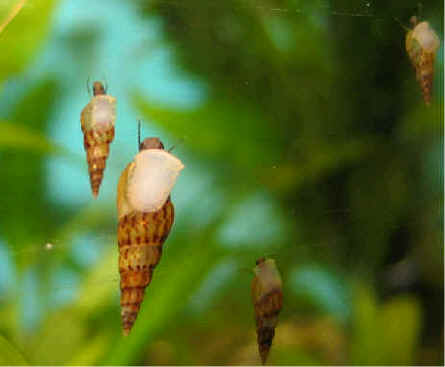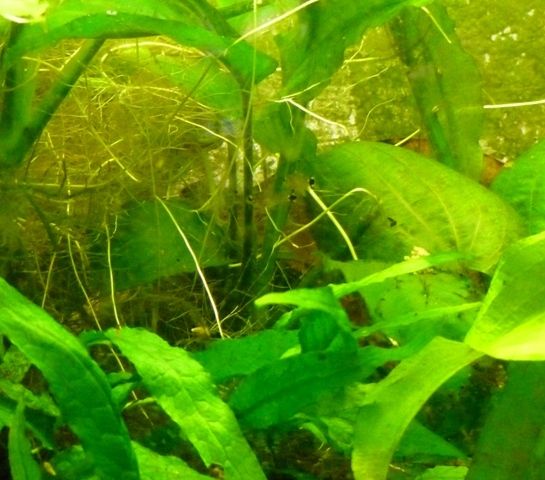Can they eat the eggs?
And how do I catch the snails?
thanx


Ingo Seidel recommends Malaysian Trumpet Snails (Melanoides tuberculata) for egg cleaning with Loricariids, and they are safe. I can't keep Anentome helena as my water is too soft, but they are carnivorous and will eat eggs. I've never had any problem with Red Ramshorn ("Planorbis" rubrum) snails either, although the jury seem to be out on these.I'm keeping Melanoides tuberculata in my tanks. I've only read from few books that they will only eat eggs when they are no good. Haven't seen them eating live ones even if our L134 dad kicked the eggs out.
I'm increasingly suspicious of these, I've never seen them eat any eggs but I also never seem to get any fish reproduction in aquaria with these snails.dw1305 wrote:I've never had any problem with Red Ramshorn ("Planorbis" rubrum) snails either, although the jury seem to be out on these.
That is useful to know, I've noticed that Apistogramma females are very keen on removing any snails in the vicinity of her spawning cave. It would make sense that they eat any eggs that they can. Fish like Killis with very tough eggs, or Cichlids/Loricariids with parental care (where MTS are safe), are an exception rather than the norm of egg scatters with softer eggs and no parental care.My regular ramshorn are Helisoma trivolvis the red variety that you had first, not the larger striped kind. I have snails in every tank that I own except one. I also have the smaller brown black style (Physa 2 different sp) and also Melanoides the MTS snails. While doing research on snails we found that Physa would reproduce faster but the ramshorn (helisoma) and species close to MTS (stagnicola) would eath their eggs. The MTS similar sp. would eat all 3 types of eggs including their own. this study was done with limited other food which may have accounted for the higher egg predation rate. If anyone would like to read our study and how they affected each others population here is the abstract of the paper that was published in Oikos http://onlinelibrary.wiley.com/doi/10.1 ... x/abstract
